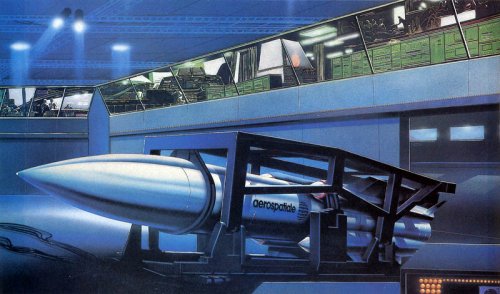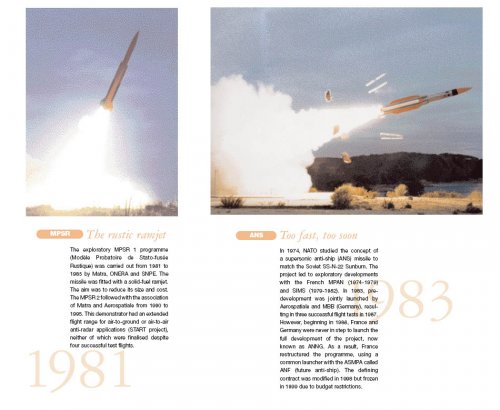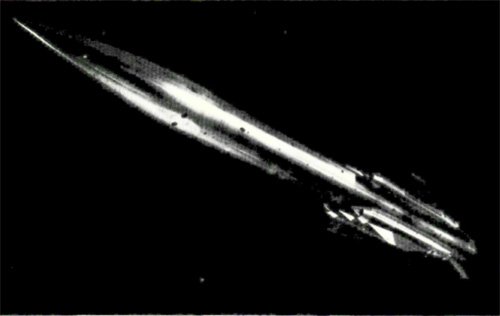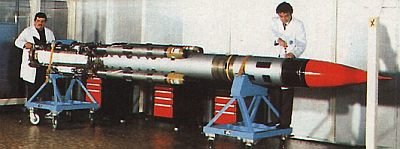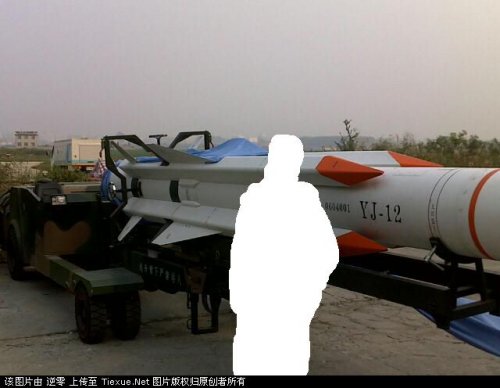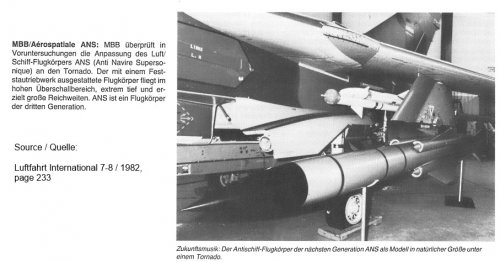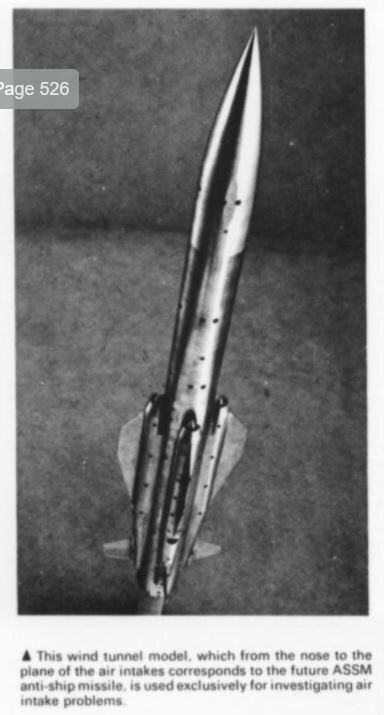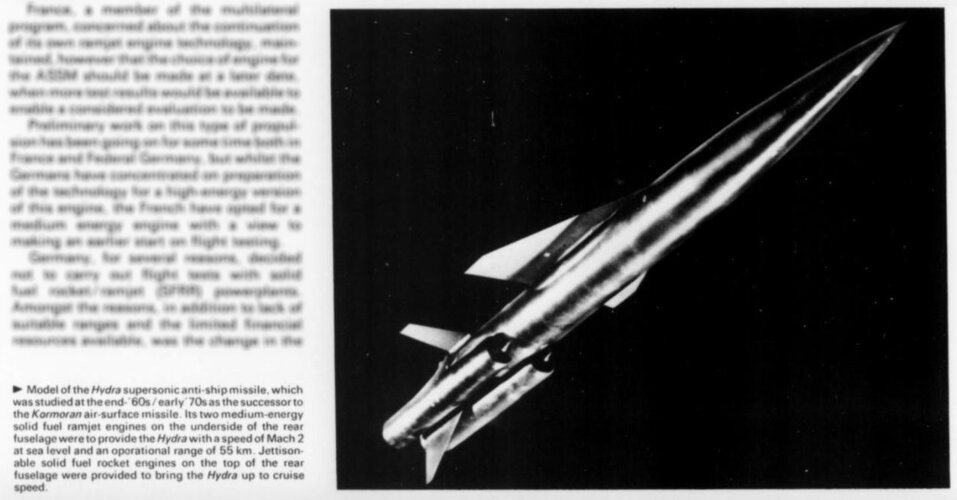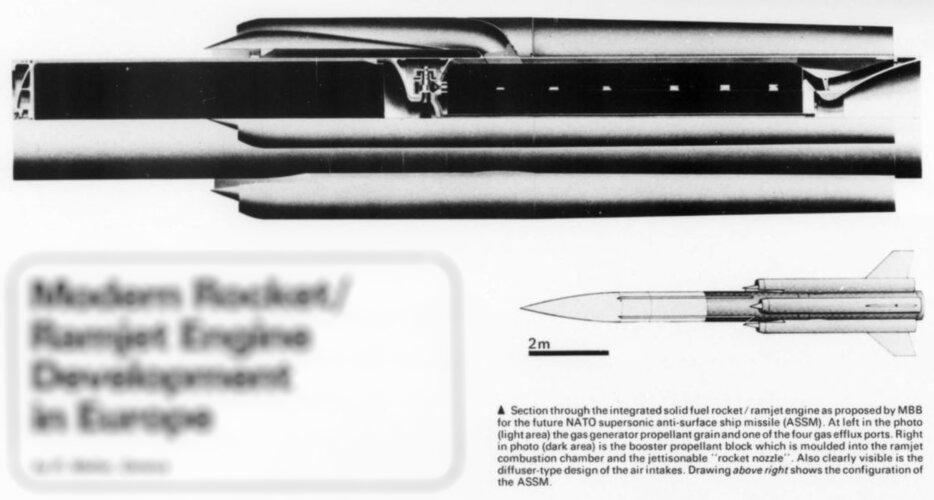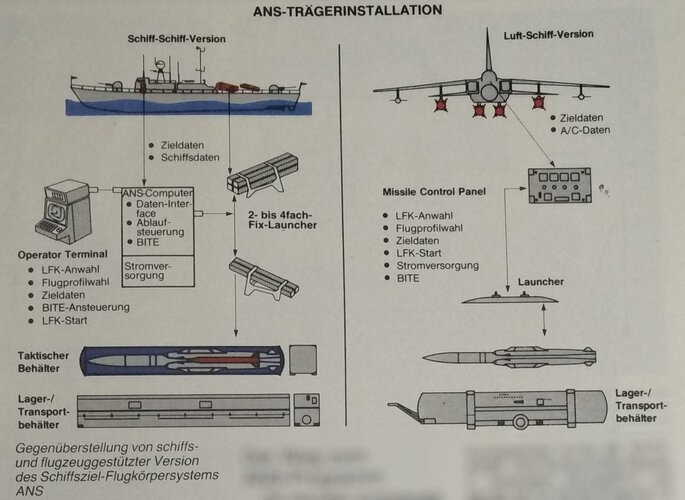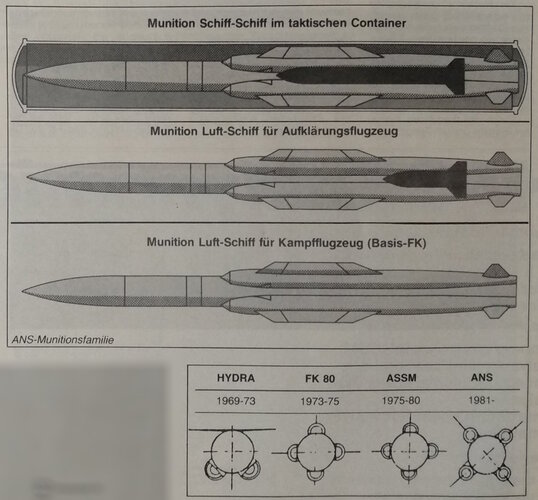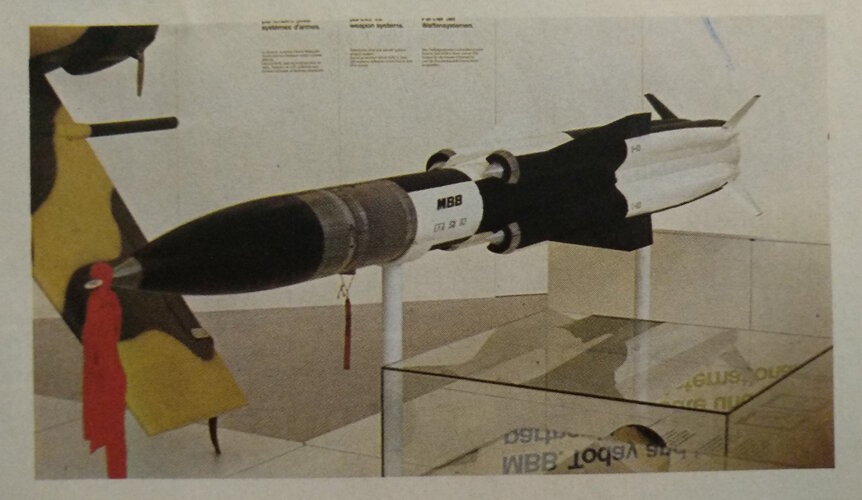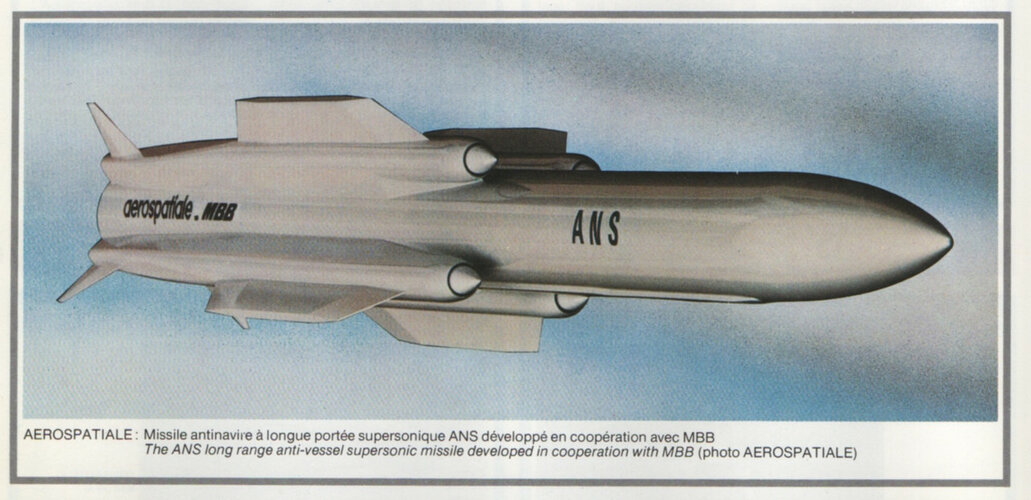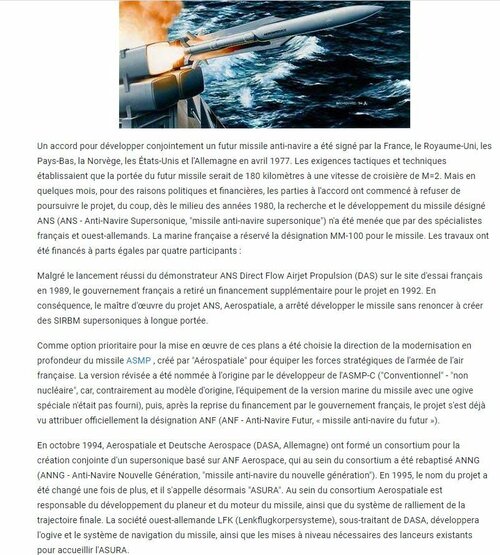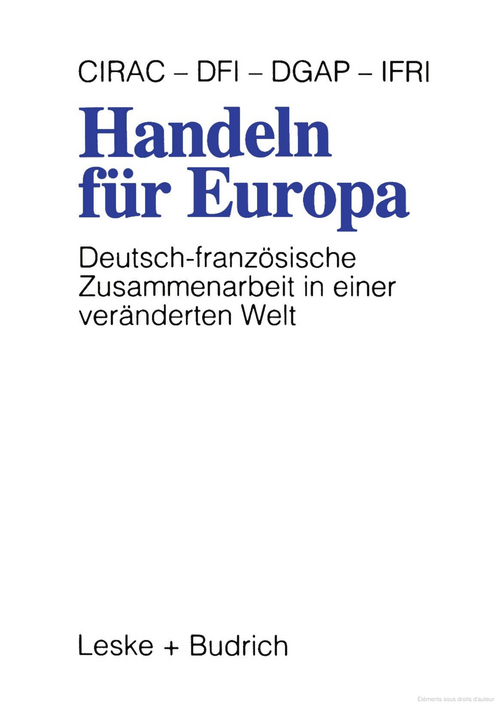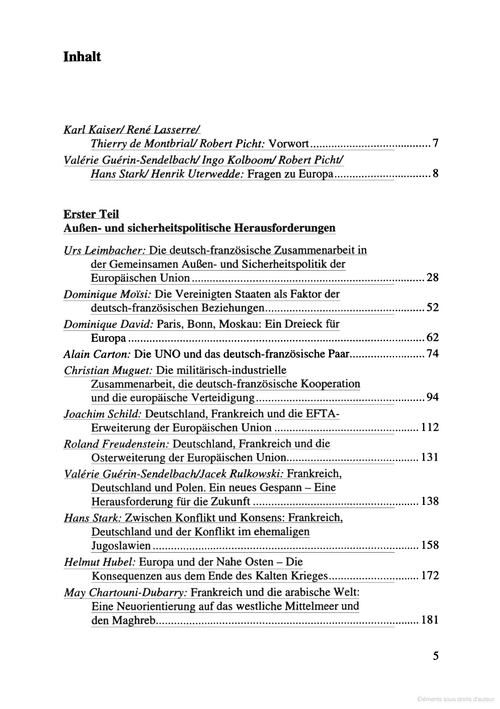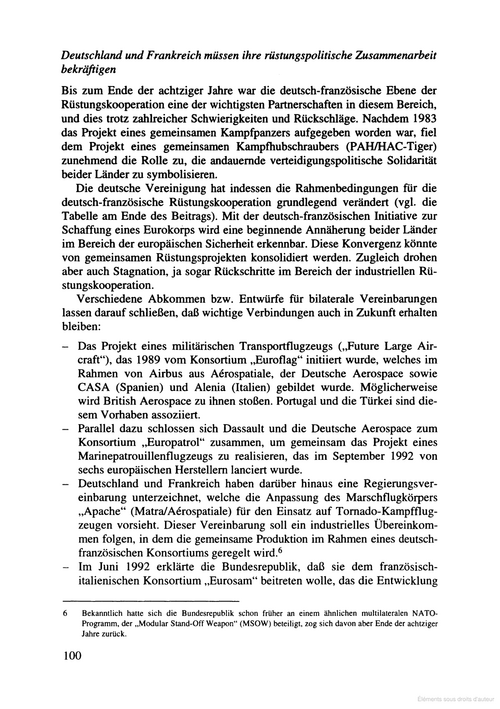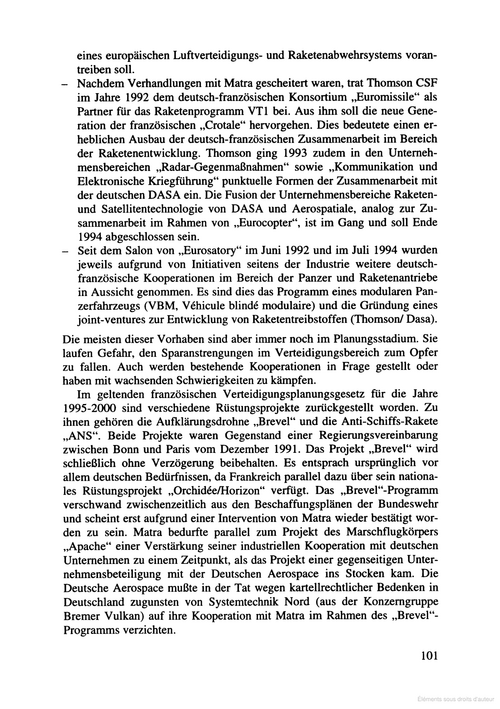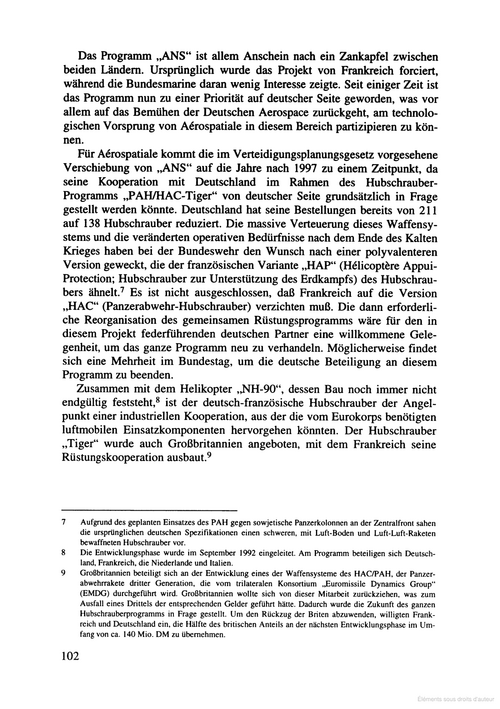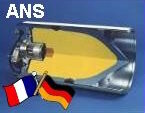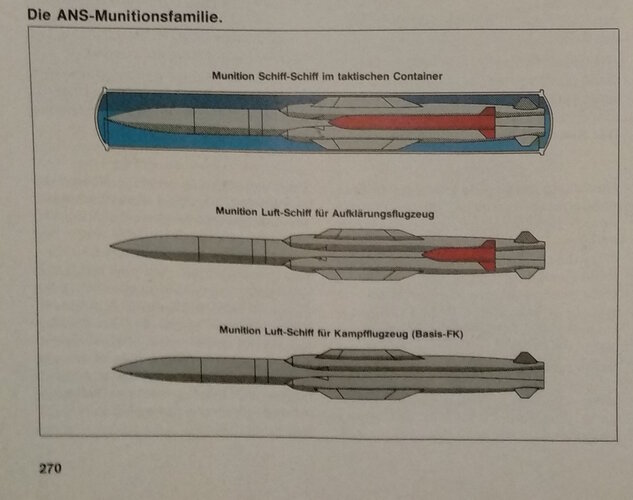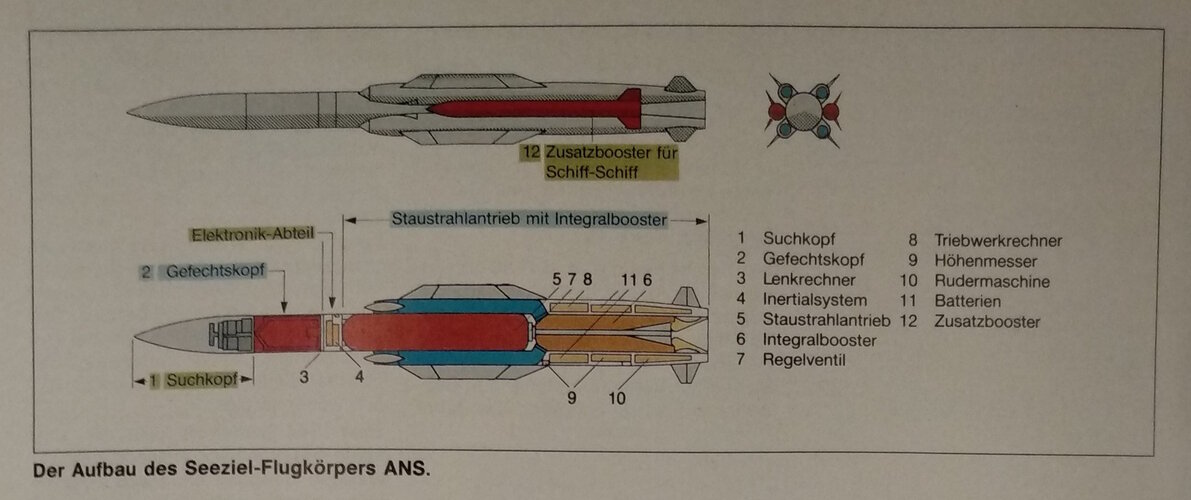An agreement to jointly develop a future anti-ship missile was signed by France, the UK, the Netherlands, Norway and Germany in 1977. The tactical and technical requirements stated that the range of the future missile would be 180 km at a cruising speed of Mach 2. But within months, for political and financial reasons, the parties to the agreement began to refuse to pursue the project, so that by the mid-1980s, research and development of the missile was not undertaken by French and West German specialists. The French Navy reserved the designation MM-100 for the missile. The work was financed equally by four participants.
Despite the successful launch of the ANS DAS (Direct Flow Airjet Propulsion) demonstrator at the French test site in 1989, the French government withdrew further funding for the project in 1992. As a result, the project’s prime contractor, Aérospatiale, stopped developing the missile without giving up on creating long-range supersonic SIRBMs.
As a priority option for the implementation of these plans, the direction of the in-depth modernization of the ASMP missile, created by Aérospatiale to equip the strategic forces of the French Air Force, was chosen. The revised version was originally named ASMP-C (Conventional, as it was non-nuclear). After the French government took over funding, the project was given the designation ANF (Anti-Navire Future, ‘Anti-Ship Missile of the Future’).
In October 1994, Aérospatiale and Deutsche Aerospace formed a consortium for the joint development of a supersonic missile based on the Aérospatiale ANF. Within the consortium the missile was renamed ANNG (Anti-Navire Nouvelle Génération, « New Generation Anti-Ship Missile »). In 1995, the name of the project was changed again to ASURA. Within the consortium, Aérospatiale was responsible for the development of the missile’s glider and engine, as well as the terminal guidance system. The West German company, a subcontractor of Deutsche Aerospace, is to develop the warhead and the navigation system.


